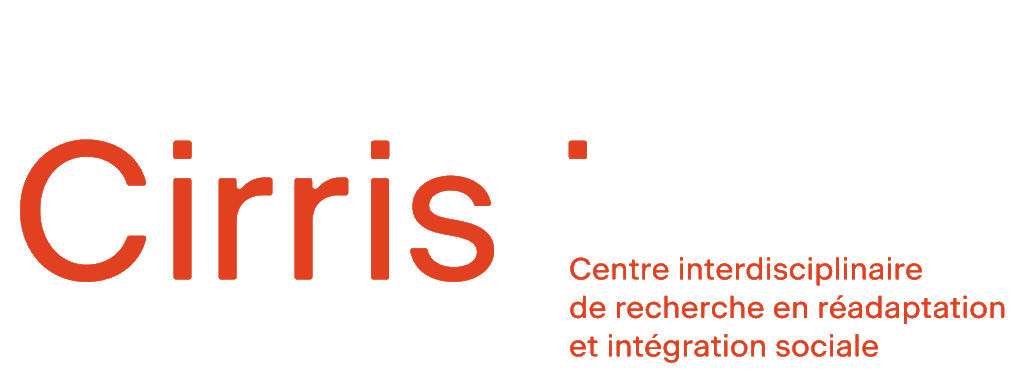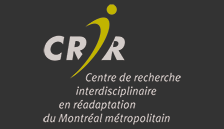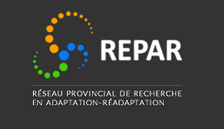Promoting Audiodiversity: The Right to (Fair) Self-Representation in the Media
Despite their significant numbers (prevalence of 2-10%), people of audiodiversity (i.e., with a communication disability [HdlC]) have little or no representation in media content (cultural, television, etc.). When they are, their disability is likely to be subject to discriminatory attitudes and prejudices, which contribute to their stigmatization and self-stigmatization. The media is an important source of information and beliefs and could be a positive vehicle for the inclusion of people with HdlC. However, there is a lack of resources to accompany them in this sense. This project aims to create these resources and to evaluate their impact through a process of inclusion of the groups concerned (people with HdlC, media professionals, etc.), based on the literature, in order to develop: 1) a guide to good representational practices, 2) advisory services to guide filmmakers, 3) a communication plan for the promotion of audiodiversity
Global progress
Understand (workshops and interviews)
Understanding (literature review)
Develop (analysis of results)
Develop (tool design)
Pilot (piloting and evaluation of tools)
Lead (communication)
Partners
Team members
Lucie Ménard, Ph. D, UQAM, Département de linguistique, Vice-doyenne à la recherche, Faculté des sciences humaines, Centre de recherche sur le langage, l’esprit et le cerveau (CRLEC-UQAM), CHU Ste-Justine/Centre de Réadaptation Marie-Enfant, Équipe VIRTUOR (développement de la réalité virtuelle pour l’empowerment des personnes qui bégaient), Secteur Santé et Société et culture.
Lisandre Labrecque-Lebeau, Ph. D., professeure associée au département des sciences infirmières de l’Université du Québec en Outaouais (UQO) et chercheure universitaire en milieu de pratique au CREMIS (co-porteuse du champ Capacités, normes sociales et interventions), CCSMTL, Secteur Santé et Société et culture.
Vocavie, OSBL, représenté par Ingrid Verduyckt, co-Présidente.
Vocavie est un OSBL fondé en 2021 qui s’engage pour une transformation de notre société vers une inclusion digne des personnes qui présentent des particularités sur le plan de la parole et de la communication.
Collaborateur·ice·s :
Geneviève Lamoureux, M. Sc. Orthophonie, Candidate au doctorat en sciences de l’orthophonie, et personne qui bégaie. Université de Montréal, École d’orthophonie et d’audiologie.
Sébastien Finlay, Candidat à la maîtrise en orthophonie et personne qui bégaie. Université de Montréal, École d’orthophonie et d’audiologie.
Partenaire :
L’Association bégaiement communication (ABC), un organisme communautaire fondé en 1985 dont la mission est de soutenir les adultes qui bégaient vivant au Québec en vue de favoriser leur épanouissement personnel, social et professionnel. Représentée par Audrey Bigras, présidente.
Scientific sectors
Innovation stages
- Émergence, Expérimentation
All projects
- Accès à l’information et à sa compréhension pour une société inclusive
- Accompagnement vers l’emploi par les pairs pour les personnes vivant avec la schizophrénie et les psychoses apparentées
- Adapted physical activity for community organizations
- Improving the accessibility of information and communication in the Montréal Museum of Fine Arts
- Améliorer la qualité de vie et la participation sociale des personnes en situation de handicap : identification des besoins à intégrer aux applications mobiles
- Apprentissage de la conduite automobile chez les adolescents et jeunes adultes ayant des incapacités : Soutien à l’élaboration d’un processus d’accompagnement basé sur les facteurs favorisant la conduite et l’autodétermination
- Autisme et vieillissement : analyse des indicateurs de santé et de bien-être des personnes
- Para-athlete Technology Needs
- CARE PLAY: Community And REsearch PLAYing together using physical literacy knowledge translation tools targeting children with disabilities in Quebec
- Co-construction of tools to foster inclusive environments for the social participation of adults with disabilities- in the context of gender and sexual diversity
- Co-construction d’un cours de danse adaptée dans la communauté pour les enfants avec la paralysie cérébrale : Faire tomber les barrières
- Co-construction d’un programme de formation continue des acteurs municipaux en lien avec les plans d’action d’accessibilité universelle
- Co-design of an Assistive Internet Navigation Device for People with Visual Impairments
- Co-Creation of Leisure Experience in an Inclusive and Accessible Theatre Space: The Case of the Segal Centre for Performing Arts.
- Co-development of intergenerational activities to break with ageism and support the social participation of people living with the after-effects of a traumatic brain injury.
- Co-développement d’ateliers en milieu communautaire pour favoriser la connaissance de soi et la communication des adolescents avec un TDL
- Co-development of workshops to promote psychological well-being after a stroke
- Co-development of an active listening training for Autism Support volunteers
- Understand and make others understand: Operationalizing an immersive design fiction tool to promote social participation by deaf people
- Connexion Spectrum : la sexualité et les saines relations
- Contraintes biomécaniques du basketball en fauteuil roulant
- Étude de cas en surdicécité visant à tester la faisabilité clinique, sociale et économique de nouvelles modalités de communication en face-à-face et à distance
- Exploring cognitive-social factors underlying pedestrian navigation following chronic moderate-to-severe traumatic brain injury (m/sTBI) using virtual environments
- Staff training and adapted physical activity
- Formation et familiarisation à l’utilisation du réseau régulier de transport en commun : un état de la situation des besoins et des ressources pour les personnes ayant des incapacités.
- Formation/entrainement pour faciliter l’utilisation des réseaux de bus et de métro accessibles par des personnes ayant des limitations fonctionnelles motrices
- Identifying the Fundamental Movement Skills for Pediatric Manual Wheelchair Users: A Step Towards the Development of Inclusive Physical Education and Social Participation
- Impacts d’orthèses robotisées des membres supérieurs
- Inclusion sociale par l’activité physique en plein air chez les enfants atteints de trouble de développement de la coordination
- Artificial intelligence for people with Parkinson’s disease
- The Mutual Aid Brigade: a vehicle for a stable, safe and healthy home.
- Le Café-IN : carrefour d’échange et de partages pour l’inclusion sociale des personnes ayant un traumatisme craniocérébral
- Les déterminants d’une expérience inclusive dans des ateliers créatifs : le cas du réseau des Bibliothèques de Montréal
- Mobilizing the community, to design a support ecosystem adapted to women who are victims of domestic violence and have suffered a traumatic brain injury.
- Mon futur chez-moi en 3D – Map It
- Musée et accessibilité au Québec
- Offering learning opportunities adapted to autistic children: a lever for social participation
- Participation sociale des personnes ayant des incapacités dans la dynamique de développement régional inclusif
- Fatherhood, co-parenting and disability: what are the experiences of fathers with disabilities in Quebec?
- Perceptions des utilisateurs ayant une déficience visuelle concernant l’utilisation des électroménagers et la nécessité d’améliorer la connaissance ou l’expérience utilisateur pour des innovations futures
- Pour une salle de classe inclusive
- Projet ceinture intelligente – Smartbelt
- Promoting Audiodiversity: The Right to (Fair) Self-Representation in the Media
- Action-research for the implementation of a hearing aid valorization program offered in the community and aimed at seniors with a hearing loss
- Recommendations for an inclusive digital budgeting assistance solution for individuals with traumatic brain injury.
- Réfléchir pour agir ensemble en formation et en sensibilisation
- Without taboos: Uniting for the inclusion of the sexual experiences and needs of adults with motor disabilities in sexology and rehabilitation
- Hiking trails: towards an accessible classification
- Soutenir ensemble la mobilité d’ainés présentant des incapacités: comment favoriser leur utilisation du transport en commun et leur participation sociale?
- Spina Bifida and aging: co-development of a toolbox
- Sport and rehabilitation
- An Exploratory Study of Deaf and Hard of Hearing Women’s Access to Social Services
- Learning unit and inclusive work environment
- Utilisation des technologies de l’information et de la communication (TIC) d’usage courant par les personnes ayant une surdité
- Valoriser les pratiques quotidiennes des parents d’enfants ayant des particularités développementales : la créativité parentale comme moteur d’inclusion sociale
- Visitabilité des commerces
- Évaluation des exigences biomécaniques et physiologiques du ski paranordique




